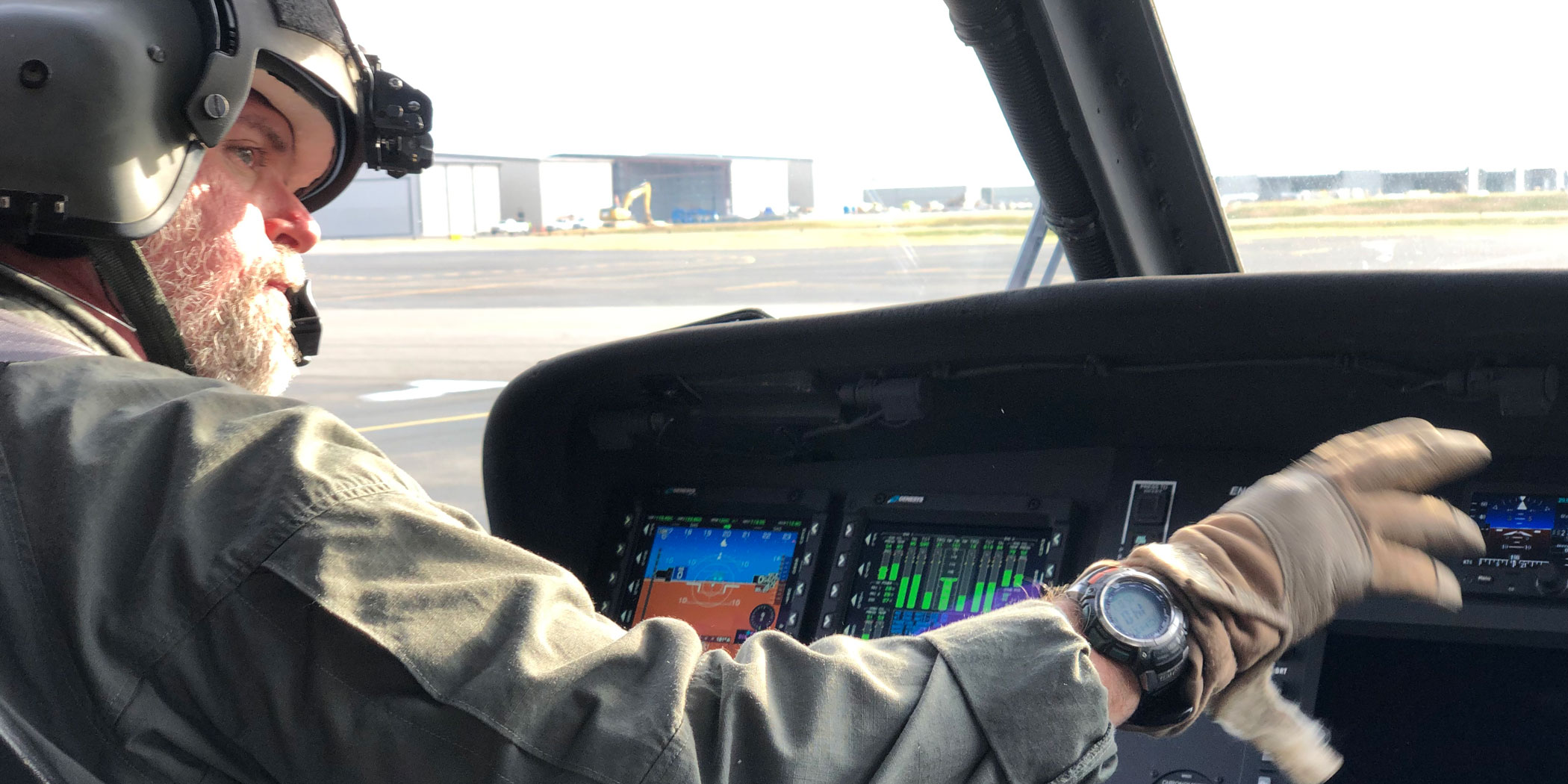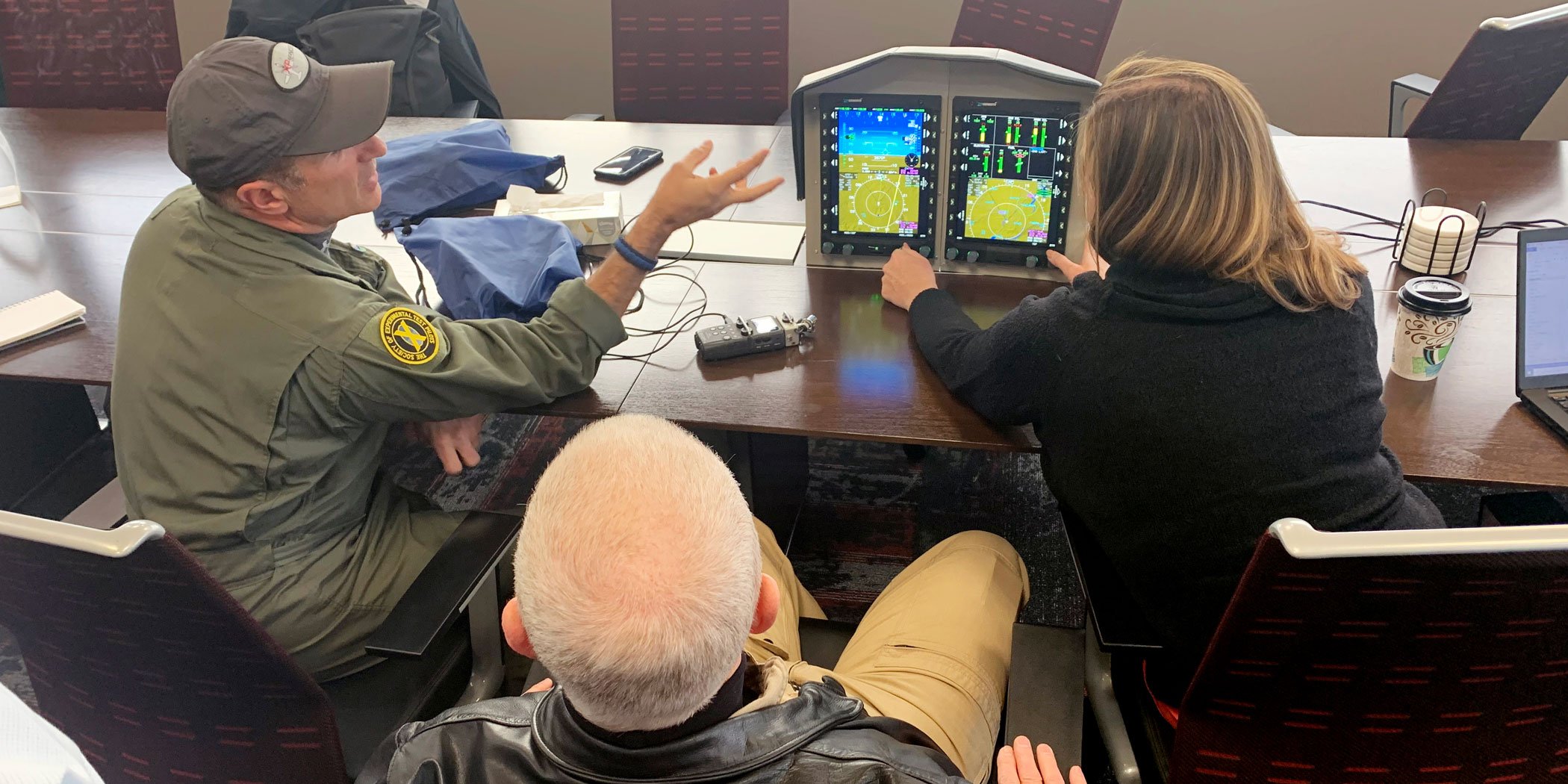Click Here to View This Page on Production Frontend
Click Here to Export Node Content
Click Here to View Printer-Friendly Version (Raw Backend)
Note: front-end display has links to styled print versions.
Content Node ID: 406291
Avionics modernization programs target older systems that are nearing obsolescence, too costly to maintain, and lacking the functionality required to fit into an ever-evolving airspace structure or mission requirements. The most successful and viable avionics upgrade programs focus on solid aircraft with many cycles remaining on the airframe and engines and performance that is in line with newer aircraft. For the operator, these upgrades can extend the life of an aircraft for decades at a fraction of the cost of buying new, more costly aircraft.
Genesys Aerosystems—a wholly owned subsidiary of flight control manufacturer Moog—identified a perfect opportunity to extend the life of the versatile and dependable utility Sikorsky UH-60 Black Hawk helicopter. The Genesys cockpit upgrade replaces legacy UH-60A/L Black Hawk avionics with an FAA-certified, fully integrated IFR glass cockpit that includes dual all-digital air data/attitude heading reference system (ADAHRS), HeliSAS stability augmentation system (SAS) and three-axis autopilot, and other modern components that not only enhance aircraft safety and mission performance but provide a strong alternative to buying a new aircraft.
The UH-60 Black Hawk first flew more than 40 years ago and to date over 4,000 examples have been produced, with over 2,300 delivered to the U.S. Army. In addition to the U.S. military, Black Hawks are in service with 28 countries through foreign military sales programs. The bulk of these helicopters—531—are earlier UH-60A/L models, which are still highly capable aircraft but share a largely analog avionics package that is nearing obsolescence. UH-60L Black Hawks share most systems with the original “A” models except for a more powerful engine and an improved gearbox to improve lifting capabilities. Many UH-60As have been converted to the L standard. In addition to military use, many early Black Hawks are beginning a second life as civil firefighting or utility aircraft.
The core issue with the legacy Black Hawks is mechanical gyros; each aircraft is equipped with either a set of electro-mechanical or fiber-optic gyros. These gyros are one of the primary components of the avionics system and are prone to failure and are expensive to maintain. The U.S. Army has declared these gyros as obsolete and in August 2020 issued a notice that called for the mandatory replacement of these older systems. In addition to these gyros, early Black Hawks are equipped with a myriad of analog flight instruments, radios, annunciator displays, and other components that date back to the early 1980s.
In addition to a complete avionics modernization program, Genesys offers a modular building block solution for older Black Hawks. For the budget minded, the mechanical gyros can be replaced with dual digital ADAHRS that can “drive” older flight instruments.
Full Panel
The most comprehensive option is the complete Black Hawk solution that essentially guts the avionics bay and transforms the instrument panel into a highly functional workspace for the flight crew. The complete system consists of four large (8- x 6-inch) IDU-680 displays, dual GPS/SBAS, dual ADAHRS, dual digital radios (navcom), a dual-channel data acquisition unit, an integrated engine and crew alerting system (EICAS) with system synoptic pages, a digital standby instrument, and an optional IFR-certified three-axis autopilot/enhanced stability augmentation system (HeliSAS).
Each IDU-680 is interchangeable and includes an integral FMS, TAWS, and TCAS with synthetic vision system (SVS). The IDU-680 displays are tested to the most stringent conditions and certified as “field-loadable software devices” capable of receiving software updates through a standard USB drive. In addition to improved reliability, improved capabilities, and reduced total system lifecycle costs, the system reduces the operating weight of the aircraft by more than 80 pounds.
The IDU-680 display is a flight and navigation instrumentation system that provides intuitive information to the pilot. Each screen is presented in a portrait orientation and bisected horizontally into two functional areas, each of which is fully configurable. The functional areas of the primary and multifunction displays (PFD and MFD) can show flight instruments, moving maps, an HSI, flight planner, radio management, terrain, traffic, weather (datalink or weather radar), video feed, or engine displays. IDU-680s are controlled through bezel-mounted controls and knobs to provide tactile feedback to the pilot, important because helicopter pilots often fly with gloves. In general, for ease of use during mission-oriented operations, most menus are only one level deep.
SVS is displayed on the PFD and includes worldwide terrain (with TAWS alerts), obstacles (towers, antennas, etc.), navaids, runways, and traffic. The flight path is shown through “highway in the sky” symbology or using a flight path vector.
The Genesys avionics upgrade is night vision goggle (NVG) compatible and includes several safety features such as an integrated TAWS to prevent CFIT accidents and other tools to help a pilot combat loss of control in a degraded visual environment (DVE) or inadvertent IMC encounter, both leading causes of helicopter fatalities.

Each IDU-680 provides TAWS functionality. Terrain and obstacles are displayed on the PFD (SVS) and moving map. TAWS uses “forward looking terrain awareness” algorithms to alert the pilot of hazards. The system also provides alerts for each of the typical ground proximity warning system modes.
To aid in pilot situational awareness during periods of a DVE—such as a whiteout or brownout condition—the IDU-680 can display a geo-referenced hover vector on either the PFD, moving map, or on an expanded hover vector page. This feature is useful during all operations near the ground. The dynamic hover vector places a “bug” or point over the ground, based on the forward velocity of the aircraft. If the aircraft slows down, the point moves towards the aircraft; if the aircraft accelerates, the point moves away. With limited forward visibility, the pilot can position that point beneath the aircraft and land.
HeliSAS Features
Genesys Aerosystems’ HeliSAS weighs only 15 pounds and brings a powerful full-authority digital autopilot and stability augmentation system to light single- and medium twin-engine helicopters. Beyond its size, the greatest value of HeliSAS is that it dramatically enhances safety by reducing pilot workload and has the lifesaving potential to recover the aircraft to a safe and stable attitude if the pilot becomes spatially disoriented.
According to Genesys, “HeliSAS is designed to be on all the time and helps return the helicopter back to straight-and-level flight in the event it is inadvertently flown into an unusual attitude or if the pilot becomes disoriented due to a loss of visual references.” As an example, if the pilot becomes disoriented during an inadvertent flight into instrument meteorological conditions (IMC), releasing the cyclic control will automatically return the aircraft to a neutral attitude (zero degrees roll and two degrees nose-up); the pilot can then manipulate autopilot controls to return the aircraft to visual conditions. In these scenarios, HeliSAS acts as a digital safety pilot.

HeliSAS is both a stability augmentation system (SAS) and a two- or three-axis autopilot; there are two independent systems, a primary SAS/autopilot and a backup SAS/autopilot. The HeliSAS system is certified for either IFR or VFR use. The SAS provides basic pitch and roll stability for the helicopter to ease workload, and stability augmentation is available in all phases of flight. The autopilot provides a variety of pitch and roll modes to optimize flight path control for the pilot. Autopilot functions are available at airspeeds greater than 44 knots.
Components of HeliSAS include a primary and secondary flight control computer, HeliSAS control panel, and primary and backup electromechanical servos. In addition, there are several assorted buttons and switches installed on the cyclic and collective controls.
To learn more, AIN recently was invited to fly Genesys Aerosystems’ UH-60 Black Hawk technology demonstrator. The aircraft was outfitted with the latest Black Hawk avionics upgrade from Genesys, which transformed it into a completely integrated digital flight deck that included HeliSAS with an IFR-certified 3-axis autopilot. Genesys and its project partner XP Services—a flight test and certification specialist—created a beautiful, uncluttered, fully functional cockpit that is intuitive for the pilot. While the demo flight included a profile that rang all the bells and whistles, one of the most interesting aspects of the flight was the HeliSAS demonstration.
The pilots for this demonstration were XP Services flight test pilots Thad King and Frank Lombardi, each with significant rotorcraft experience and both graduates of a test pilot school. King would act as pilot-in-command in the left seat, while Lombardi would help navigate the flight profile from the observer seat. The AIN writer/pilot (me)—an airline pilot with no helicopter flight time—would fly from the right seat.
Prior to the flight, Genesys Aerosystems technical representatives briefed all things related to the Black Hawk avionics upgrade, while King and Lombardi provided a safety briefing and answered questions related to the flight profile. Lombardi gave a great summary of the benefits of HeliSAS and described SAS as “augmenting the Black Hawk’s automatic flight control system” and “giving the aircraft a bigger keel,” (something that I could relate to as a sailor).
Flying HeliSAS
During the flight, HeliSAS provided a significant stability improvement. King was able to demonstrate the Black Hawk’s flight characteristics with and without HeliSAS engaged and the automatic recovery feature. Of interest, King also allowed me to successfully take off, hover, and land the helicopter with the aid of HeliSAS, again, with my having no past helicopter flight time. Subsequent attempts to hover without HeliSAS would yield different results.
King demonstrated the automatic recovery feature by rolling the aircraft into a 35-degree bank and pitch to 7 to 8 degrees nose down. The recovery was initiated by releasing the cyclic control; within seconds the aircraft returned to a near level, stabilized flight attitude.
When the SAS mode is engaged in-flight, it is designed to maintain the pitch and roll attitude at the time of engagement within limits (10 degrees bank and nose down and 11 degrees nose up). If SAS is engaged above these limits, the system will trim the aircraft to the limiting values.
HeliSAS has a low- and high-airspeed protection feature when an autopilot pitch mode is engaged. If the airspeed decreases below the low-speed threshold, HeliSAS will pitch the aircraft down to obtain a set recovery speed. If the airspeed increases above the high-speed threshold, HeliSAS will pitch the aircraft up to obtain the set recovery speed. An aural warning tone will sound when these airspeed protection features are active.
Other demonstrations included manipulating the autopilot through the centrally mounted HeliSAS control panel. Roll modes include heading select and navigation mode (VOR, LOC, GPS, ILS, or a separate BC), while pitch modes include airspeed, altitude hold, or vertical navigation mode. On aircraft equipped with the Genesys IDU-680 displays (such as the Black Hawk), the autopilot can track search-and-rescue patterns as programmed in the integral FMS.
Genesys Aerosystems has delivered more than 1,000 HeliSAS systems to over 100 operators, including many aeromedical operators. HeliSAS is currently certified on the Airbus Helicopters H120, H125, and H130; Bell 206B/L, 407, and 505; Robinson R44 and R66; and Sikorsky UH-60 Black Hawk, and these are all aircraft that are often flown single pilot.
Big things do come in small packages. Genesys’s HeliSAS provides a lot of value at a relatively low cost and minimal weight penalty. As a digital safety pilot, the autopilot reduces workload, and its functionality rivals many high-cost systems, while the stability augmentation system features unique flight envelope protection and automatic recovery modes that are lifesavers.